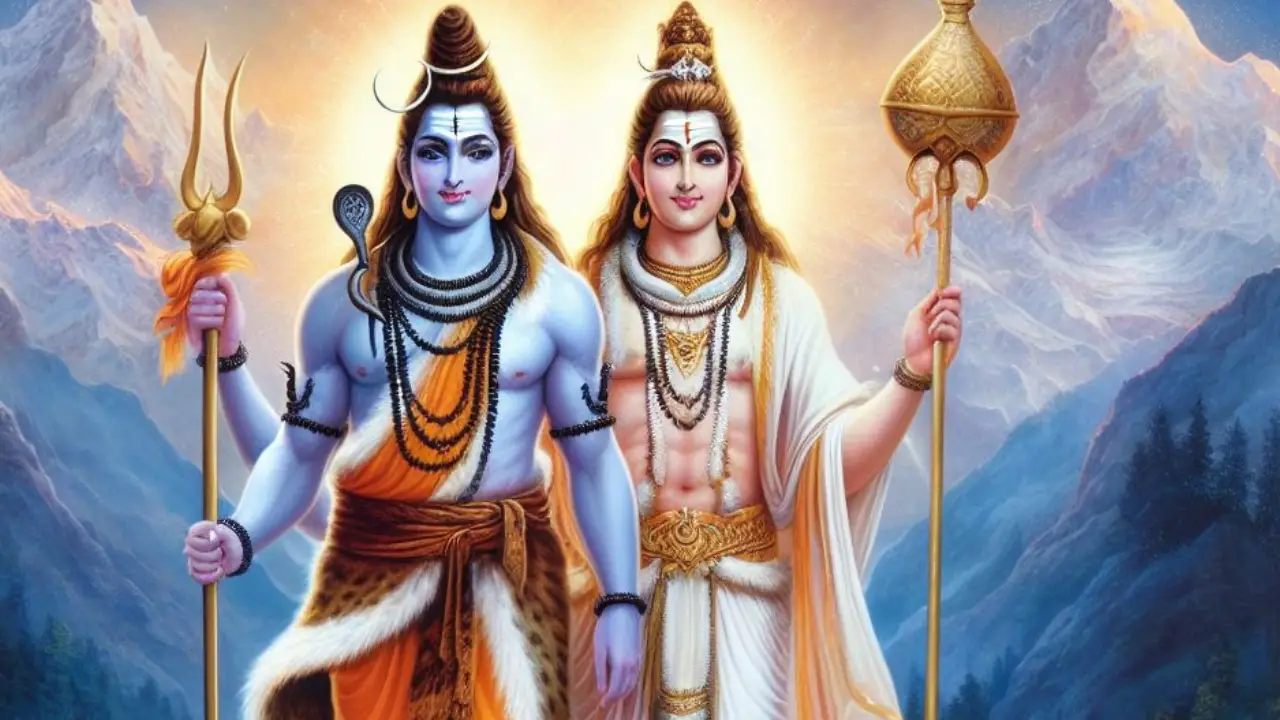In the vast and intricate tapestry of Hindu mythology, two deities reign supreme – Lord Shiva and Lord Vishnu. Each possesses unique attributes and commands profound devotion from their respective devotees. However, beneath the surface of apparent differences lies a profound truth – the divine unity that connects these two great gods. In this blog post, we will explore the sacred connection between Lord Shiva and Vishnu and unravel the mysteries that bind them together.
The Great Trinity: Brahma, Vishnu, and Shiva
Hinduism upholds the belief in a divine trinity, comprising Brahma, Vishnu, and Shiva. Together they are responsible for the creation, sustenance, and destruction of the universe, respectively. Among them, Lord Vishnu is considered the preserver, Lord Shiva the destroyer, and Lord Brahma the creator. These roles may seem disparate, but they form an inseparable cycle that governs the cosmic order.
The Churning of the Ocean: Emergence of Unity
In one of the most celebrated episodes of Hindu mythology, the churning of the cosmic ocean (Samudra Manthan) brought forth numerous divine treasures. These included the pot of nectar (Amrita) that bestowed immortality. To safeguard this elixir from evil forces, Lord Vishnu, in his Mohini avatar, intervened. During the churning, a fearsome poison emerged, threatening to consume the universe.
To save creation from destruction, Lord Shiva stepped forward and consumed the lethal poison. His act of self-sacrifice underscored his role as the benevolent protector of the cosmos. This event marked the inception of a profound camaraderie between Vishnu and Shiva, solidifying their connection for eternity.
Harmony in Diversity: Lord Shiva and Vishnu’s Avatars
Their avatars (incarnations) further manifest the concept of divine unity. Lord Vishnu’s ten avatars, known as the Dashavatara, include iconic incarnations like Lord Rama and Lord Krishna, making him renowned for them. These avatars take human form to restore cosmic balance and guide humanity towards righteousness.
Similarly, Lord Shiva has assumed various avatars to fulfill specific cosmic purposes. Ardhanarishvara, a composite form of Shiva and his consort Parvati, exemplifies the inseparability of male and female energies, symbolizing unity in duality. Other avatars like Bhairava and Nataraja also showcase different aspects of Shiva’s persona.
Episodes of Mutual Reverence
Hindu scriptures recount numerous instances of mutual respect and admiration between them. In the Kurma Purana, Lord Vishnu worships Lord Shiva with the revered Shiva Sahasranama (thousand names of Shiva), highlighting Shiva’s exalted position. Conversely, in the Shiva Purana, Lord Shiva eulogizes Lord Vishnu through the Vishnu Sahasranama (thousand names of Vishnu).
Temples Celebrating Unity
Several temples across India stand as a testament to the divine unity of Shiva and Vishnu. The Badrinath temple in Uttarakhand houses Lord Vishnu, and a few kilometers away, the revered Kedarnath temple is dedicated to Lord Shiva. The distance between these two temples symbolizes the harmony of their existence.
The Story of Harihara
An enthralling narrative that signifies their unity is the legend of Harihara, a combined form of Lord Vishnu (Hari) and Lord Shiva (Hara). This fusion form depicts the oneness of these deities and exemplifies the understanding that they are two faces of the same divine reality, the ultimate truth.
Conclusion
The sacred connection between Lord Shiva and Vishnu transcends individuality, portraying a grander truth – the oneness of all existence. Their collaboration in cosmic endeavors and mutual reverence for each other highlights the harmony amidst diversity. This is a lesson that resonates deeply within the vast expanse of Hindu spirituality. As devotees continue to offer their devotion to Lord Shiva and Vishnu, they embrace the profound understanding that these two deities are inseparable, bound by the eternal thread of divine unity.

